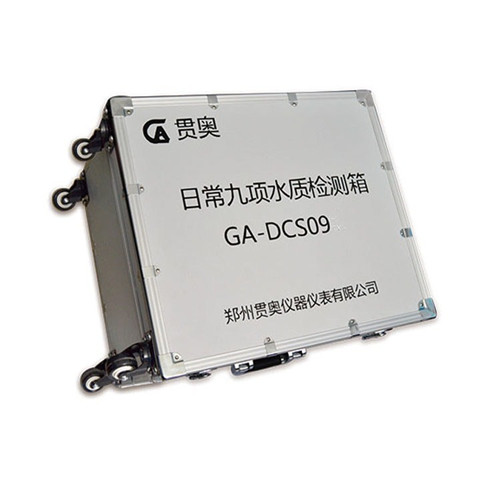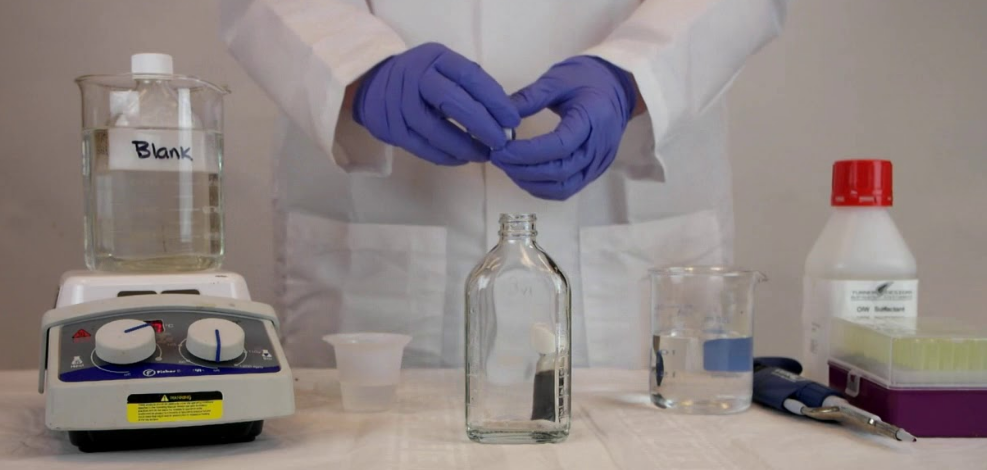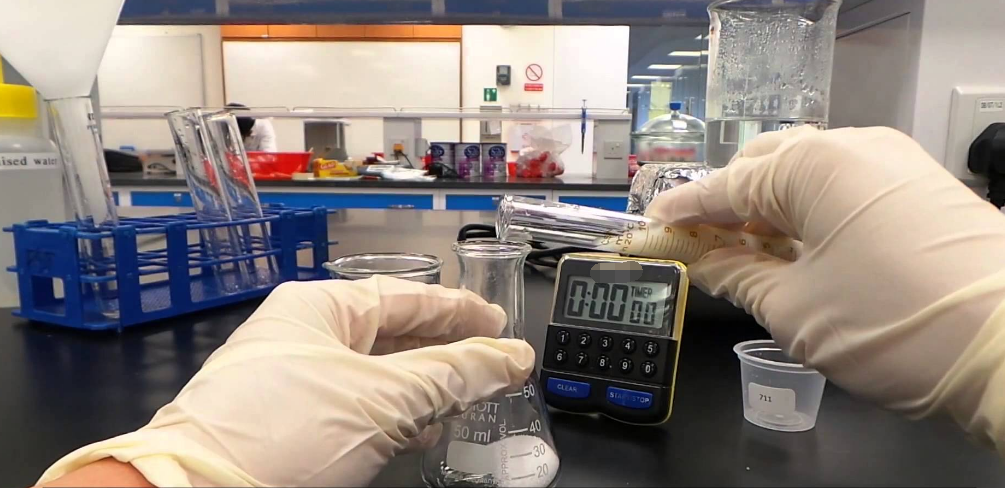The hardness of water mainly refers to the amount of soluble calcium salt and magnesium salt. The amount of these two ions determines the hardness of the water. In daily natural water, rainwater is soft water, and ordinary surface water has low hardness, mainly because the hardness of groundwater is high. Water hardness is one of the important quality control indicators in drinking water testing.

Water hardness testing reagents and equipment
1. Reagents for hardness testing
(1) Ammonia buffer solution (pH=10): Weigh 16.9g analytically pure ammonium chloride (NH1C) in a small amount of distilled water, add 143mL analytically pure concentrated ammonia (p20=0.88mL), and then dilute to 1L with distilled water. Weigh 1.25 RMREDTA into 250mL buffer solution.(2) Chrome black T indicator: Weigh 0.5g of chrome black T and dissolve it in 10 mL of the above ammonia buffer solution, then add absolute ethanol to dilute it to 100 mL, and place it in a brown bottle. This solution is stored in the refrigerator and is valid for about 1 month. The solid indicator prepared by the following method can be stored for a long time: 0.5g chrome black T and 100g solid sodium chloride (analytical purity), grind it evenly in a mortar, and store it in a brown bottle.
(3) 10% analytical pure ammonia solution
(4) 1:1 hydrochloric acid solution
(5) Metallic zinc (with zinc content above 99.9%): first wash away surface oxides with dilute hydrochloric acid, then rinse with water, then rinse with acetone, drain and bake at 110°C for 5 minutes for use.
(6) Zinc standard solution (Czn2=0.010mol/L): accurately weigh 0.6538 above metallic zinc, add 6mL 1+1 hydrochloric acid solution in a 10m beaker, cover with a watch glass, and heat on a water bath (add a few drops Hydrogen oxide accelerates dissolution), after it is completely dissolved, transfer it to a 1L volumetric flask, add distilled water to the mark, and mix.
(7) Disodium EDTA standard solution (CEDTA≈0.01mol/L): Dry EDTA disodium dihydrate at 80°C, put it in a desiccator and cool to room temperature, weigh 3.72508 and dissolve in water, and set it in a volumetric flask. The volume is 1000mL and placed in a polyethylene bottle; its exact concentration can be calibrated with zinc standard solution. EDTA disodium standard solution calibration method: use a pipette to draw 25.00mL of the above zinc standard solution into a 250mL Erlenmeyer flask, add 75mL distilled water, use 10% ammonia to adjust pH≈10, add 5mL buffer solution and 4~5 drops of chrome black T indicator, shake well, immediately titrate with EDTA disodium standard solution under constant shaking, and drop to the end point when the solution turns from purple to blue. Record the dosage V of EDA disodium standard solution. Perform the parallel measurement 2 to 3 times.
2. Instruments used for water hardness testing
(1) 1 50mL acid burette, used to fill EDTA standard solution(2) 1 pipette of 10, 25, 50, 100mL each, used to pipette water samples or standard solutions.
(3) 4 250mL conical flasks.
3. Preparation and calibration of water hardness EDTA standard solution
(1) Preparation of EDIA standard solutionWeigh 0.9000g of EDTA-2Na salt, add 50mL of distilled water to dissolve, transfer to a 250mL reagent bottle, dilute to 250mL, label it for use.
(2) Calibration of EDIA-2Na standard solution
Pipette 25mL of zinc standard solution, add 75mL of distilled water, add 5mL of buffer solution, adjust the pH of the solution to ≈10, add drops of chrome black T5, and titrate with EDTA; titrate until the solution turns from purple to blue when the titration end point is reached, record the consumption The amount of zinc standard solution, and calculate the concentration of EDTA-2Na standard solution according to the formula; do parallel experiments three times.

(1) Use a pipette to transfer 100 mL of the water sample into a 250 mL conical flask (if the hardness is too high, take an appropriate amount of water sample and dilute to 50 mL with distilled water).
(2) Add 2mL buffer solution and 4 drops of chrome black T indicator, shake well; make the water sample appear a clear purple-red color, and make the pH ≈ 10.0
(3) Immediately titrate with EDTA disodium standard solution. The speed at the beginning of the titration should be slightly faster, and the speed should be slightly slower when approaching the end point, and shake well to prevent precipitation. The color of the solution changes from purple-red to blue, the purple hue disappears at the last point, and the end point is when the blue just appears. The entire titration process should be completed within 5 minutes. Record the amount of EDTA disodium standard solution VEDTA. At the same time, do a blank test and record the amount of EDTA standard solution as V. Parallel testing 3 times, and then get the hardness parameters.




